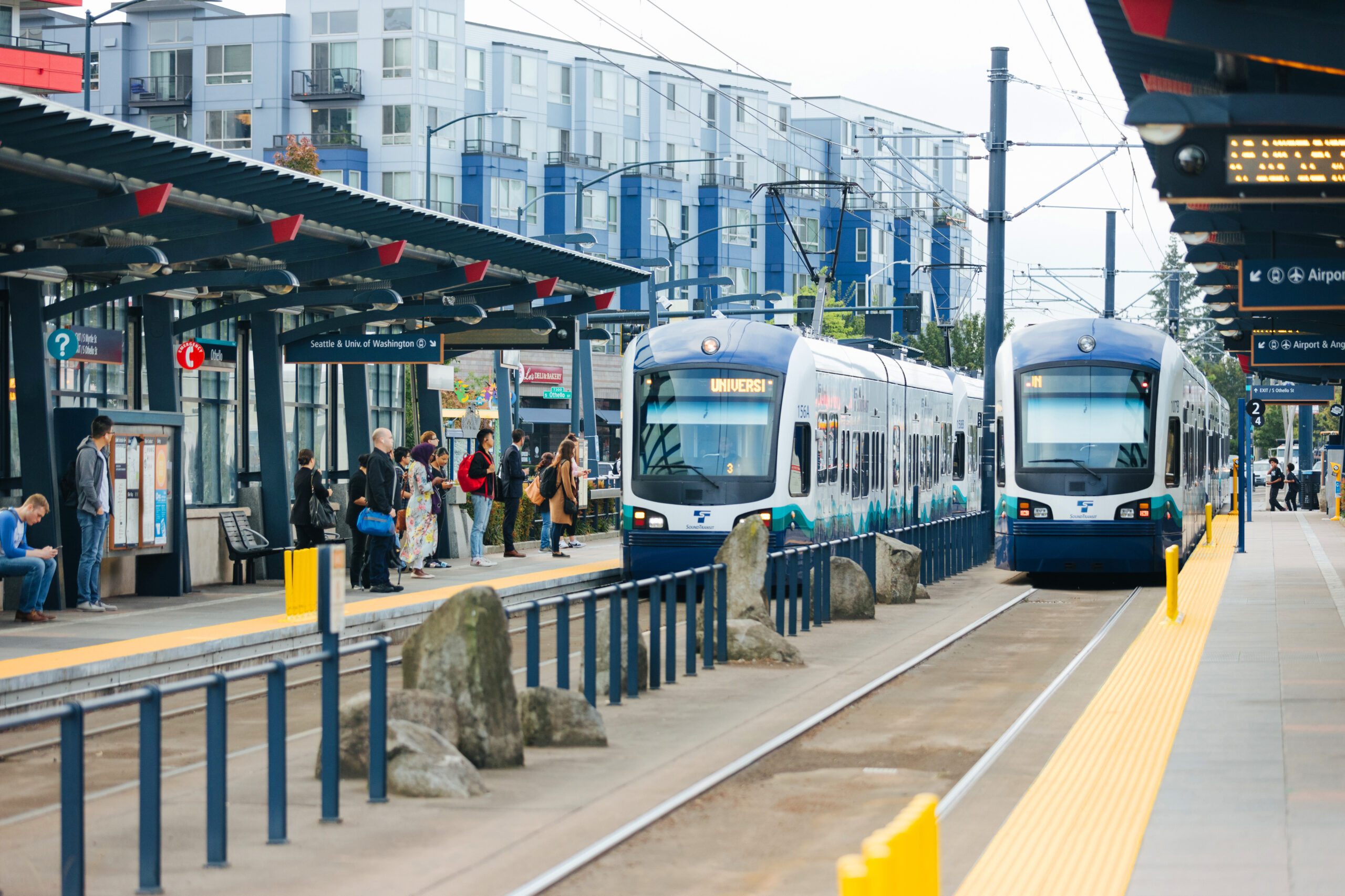Transit-Oriented Development (TOD) is the way communities have historically developed around the world, with clusters of human development near key transportation routes like waterways and rail lines. Today, station areas plan for compact, walkable, and mixed-use development, assuming people within ½ mile will walk to access transit.
Creating more density near transit will be critical as Washington plans to accommodate future population growth, while also addressing climate change. TOD is the practice of planning for greater development intensity near transit stops, such as mixed-use buildings with employment, commercial, multifamily residential, and public spaces. In this context, public transit means transit that accommodates commuting and use as a primary transportation option, such as light rail, heavy rail, or bus rapid transit.
TOD supports human-scaled compact urban development – clustering homes, businesses, employment sites, all within easy access to high quality public transit service. Many agencies in Washington are already working on TOD initiatives.
Resources
- Commerce Transit Oriented Development Implementation (TODI) Grant page. While Commerce has no TOD planning funds available at this time, we continue to support current Transit-Oriented Development Implementation grantees and look forward to celebrating their successes.
- HB 1110 requires larger cities in Washington to increase density in transit zones. Please find more information on our Planning for Middle Housing page.
- Transportation Efficient Communities resources on land use and transportation planning
- WSDOT Community Planning Portal a great source for state transportation data
- WSDOT Multimodal Accessibility
- WSDOT Kingsgate Park and Ride Transit Oriented Development Pilot (PDF)
- PSRC – TOD regional committee
- Sound Transit Station Experience Design Guidelines (PDF)
- Sound Communities TOD resources – provides a manual for station area development
- Amazon Housing Innovation TOD Page

